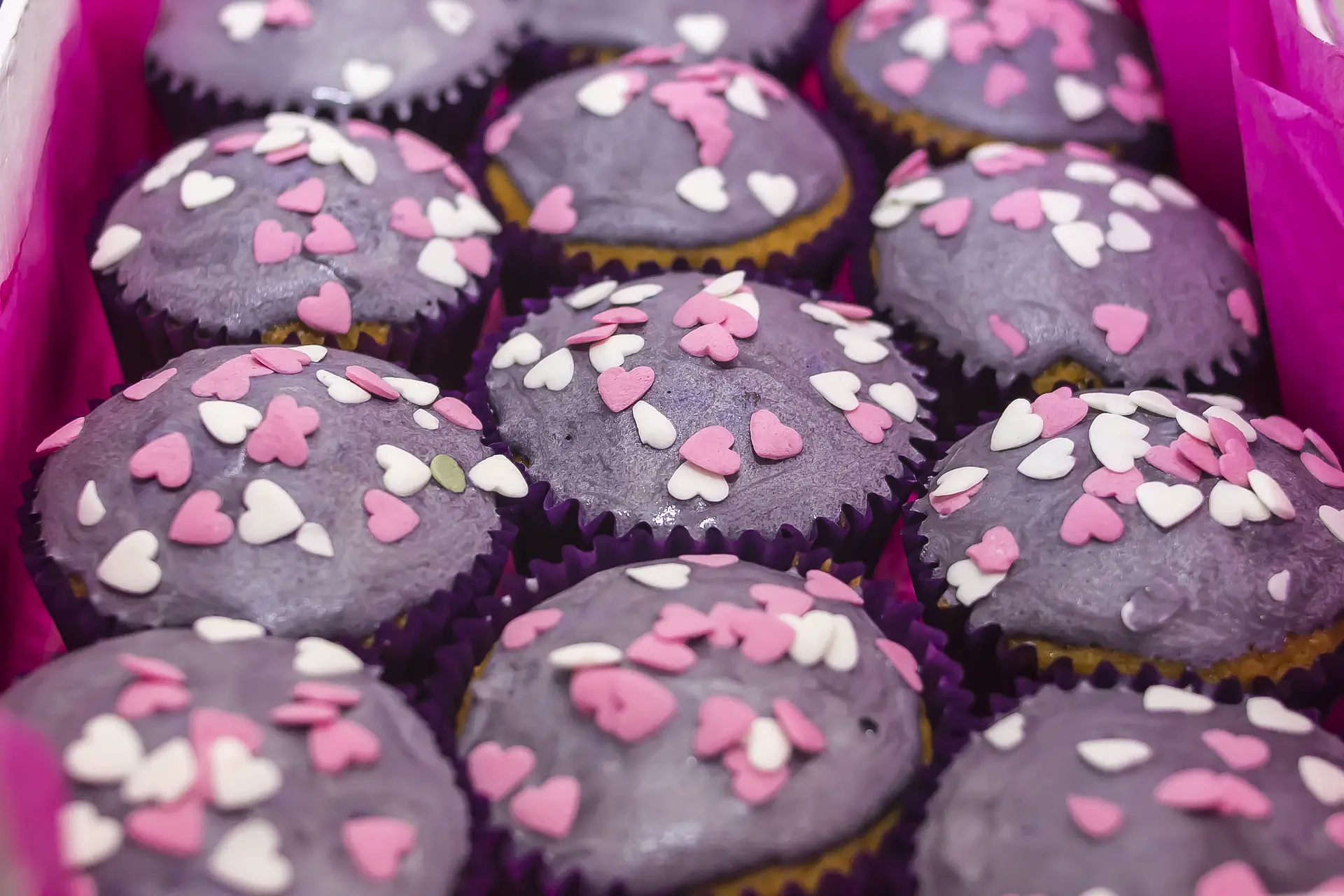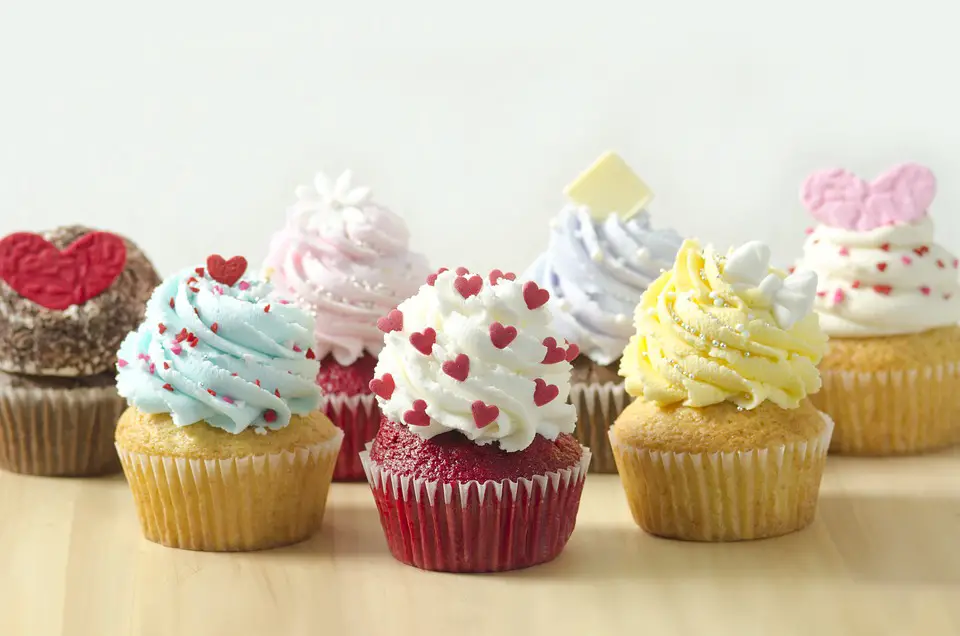When baking cupcakes for a party, you make enough for the estimated number of guests plus a few extras. However, occasionally you could have extras, and you’ll need a way to store them if you want to keep your masterpieces to enjoy later. Depending on how long you need to preserve them, there are different solutions for keeping them fresh.
When making cupcakes, you might want to make and store them in advance. This is a great way to keep them fresh for longer periods. They are a fun addition to any occasion. You can store them for a week or more. Make sure that you keep them away from sunlight. This will prevent them from getting too dry. A shallow plastic bin with a lid is a great option. The lid will provide extra airflow and prevent moisture from seeping in. These are available at Walmart and the dollar store.

What is Cupcake?
A cupcake is a little cake that is typically made for one serving. Most bakeries provide a line of small cakes in addition to their other desserts because many people enjoy preparing and eating cupcakes and other miniature delicacies. A cupcake may be referred to as a fairy cake in some regions of the world, which is likely a reference to its diminutive and delicate size.
Cupcakes can be made from almost any cake. Most cupcakes are typically baked on specialized pans or molds that include a network of connected cups for the batter. Although some sponge cakes and tortes may not translate well, these recipes can typically be adapted with a few minor adjustments.
These cups may be lined with wax paper or foil to simplify removal and let guests handle the cupcakes without getting their hands soiled.
How to Store Cupcakes?
Cupcakes without frosting will remain edible without refrigeration for two days. However, you should hold off on icing the cupcakes until you are ready to serve them—within two days—if you intend to top them with frosting that needs to be refrigerated.
Cupcakes that have just been baked should be allowed to cool on a wire rack for at least one hour. The bottom, sides, and tops can cool thanks to the wire rack. When you frost the cupcake tops while they are still warm, they may become sticky because they will continue to produce steam. Simply keep them at room temperature in an airtight container or plastic storage bag. If they don’t lose moisture or aren’t exposed to harsh conditions, they’ll keep their freshness.
When frosting cupcakes that you’ve kept at room temperature and discovered the tops are sticky, let them remain uncovered for an hour to let the tops dry off a little. Another way to preserve the tops is to pipe the frosting rather than spreading it with an offset spatula or knife.
Avoid the temptation to keep cupcakes in the fridge to increase their shelf life past two days. In a refrigerator, cupcakes will dry out. In actuality, storing cupcakes in the refrigerator promotes the crystallization of the sugar and flour, hastening the staleness of the baked goods. Cupcakes should only be put in the refrigerator if the icing is melting quickly, which could happen in the summer or warmer locations.
How to Freeze Cupcakes?
Wrap the Cupcakes
Put your cupcakes in sturdy freezer bags. Carefully insert them one at a time, so they all sit flat—zip up the bags. I put 4, 6, or 12 in a bag, depending on the size of the bags and the amount of freezer space I have.
Keep your Cupcakes Frozen
Carefully place the cupcakes in their bags in a freezer compartment so they won’t be smashed.
Top Advice
Cupcakes can stay in their best shape for up to 4 weeks before they dry out.
All the following freeze admirably: sponge cake, Madeira, chocolate material, heavy fruit, soft fruit, lemon (without adding syrup), rich chocolate, and gluten-free items. Red velvet or carrot cake is not frozen.
If you wish to remove individual cakes from the freezer, you can wrap them in cling film before putting them in a freezer bag.
How to Defrost Frozen Cupcakes?
Frozen cupcakes can be defrosted in two different methods. Remove your frozen cupcakes and put them on the counter for slightly over 30 minutes if pressed for time. If you’re not in a hurry, you may leave your frozen cupcakes in the refrigerator overnight to thaw.
To prevent the icing from sticking as it thaws, remove the wrapped cupcakes from the freezer and remove the cling film or foil covering. Put the frozen cupcakes back into their plastic containers or on a platter and store them in the refrigerator for several hours or overnight. They can also be left on a tabletop for approximately an hour to defrost quickly if the weather is cool.
Before serving, let the cupcakes come to room temperature and fully thaw. If the cupcakes don’t already have frosting, apply it as you like.
What is the Shelf Life of a Cupcake?
Depending on the type, cupcakes can maintain their quality for two days to a week. Cupcakes with frosting and filling preserve their finest quality for two to four days, although basic, unfrosted cupcakes can last up to a week on the counter. Egg– or dairy-filled or frosted cupcakes are normally kept in the refrigerator for 3 to 5 days.
Frosted cupcakes can be stored in an airtight container for two to three months. The frosting outside of a frozen cupcake may become dry and stale, but the frosting inside will remain moist.
Keeping baked goods at a temperature too high will result in them losing their texture. A common warning sign that a cupcake is about to expire is mold. This will develop if the food is stored in a hot, humid environment or exposed to direct sunlight.
What are the Different Flavors of Cupcakes?
Pumpkin Flavor
Foods with a pumpkin flavor are very popular in the fall and winter. It should not come as a surprise that pumpkin cupcakes are popular in the run-up to Halloween and during the holiday season, given the pleasant flavor of these huge orange fruits, which can be found in anything from pie to beer. Pumpkin cupcakes are quite well-liked despite being readily available for only a few months of the year. They frequently appear on dessert menus at restaurants, supermarket stores, and celebrations.
Banana Flavor
A steaming loaf of banana bread has a reassuring and nostalgic quality. Although banana cupcakes resemble banana bread in flavor, you generally won’t eat one for breakfast. Like their pumpkin-flavored siblings, these unexpectedly popular desserts pair well with a range of toppings and icings. They are more prevalent than you might assume.
Coffee Flavor
Coffee has long since transitioned from a popular morning pick-me-up drink to a popular dessert staple. Coffee-flavored cupcakes may seem strange to some people, but they make perfect sense when you think about them. There is also coffee cake (usually without icing), ice cream, sweets, and even tiramisu, which has a distinct coffee flavor. Don’t be surprised if you see coffee cupcakes coexisting on the shelves alongside their chocolate and vanilla counterparts at your neighborhood grocery store or bakery.
How to Recognize Cupcake that has Gone Bad?
Consider the possibility that you occasionally overlook your cupcakes (I don’t, I promise). A few days later, they spend some time in storage. When ought one to throw them away?
In particular, keep in mind the following:
Mold. That little man is doomed if there are any indications of fuzz on the Cupcake’s or the frosting’s surface.
Stale odor If your cupcakes smell bad, throw them away. I’ve never had cupcakes that smelled bad in any way.
Too much time was spent in storage. For safety reasons, throw away your cupcakes with raspberry frosting that have been sitting on the counter for a week. They might still be alright. You never know.
Quality. The last thing to consider is the quality if there doesn’t appear to be anything wrong with the cupcakes. Your cupcakes might taste stale or dry if stored for a long time. Or perhaps the icing is melting or wilting. You should discard these cupcakes if any one of them bothers you.
As usual, throw your cupcakes away if you’re not sure they’re safe to consume.
Your senses are typically the most accurate tools to determine whether your cupcakes have gone bad, even though it’s not a flawless test. Bad cupcakes frequently have a hard, dry texture or a moist texture that is occasionally combined with mold. Fruit fillings that turn slimy or moldy are another sign that the cake has gone bad.
Naturally, eating ruined food poses certain health hazards, so always remember to use good food hygiene and consume your food before its expiration date!
What are the Side Effects of Consuming Cupcakes?
You will gain an unhealthy weight if you consume too many calories daily, raising your risk of Type 2 diabetes and heart disease. Even worse, frosting and cupcakes include saturated fats that increase cholesterol levels and the risk of heart disease.
Energy and Fat
Typically, cupcakes are high in fat and calories. You probably absorbed more than 1,500 calories and 50 grams of fat if you ate three regular-sized chocolate cupcakes with chocolate frosting. Similar calories and fat can be found in vanilla cupcakes and vanilla icing.
Sugar
You most likely ate upwards of 100 grams or more of sugar from those three cupcakes, while the precise number depends on how much icing they had on them and what flavor they were. About 20 grams of sugar are included in only two tablespoons of icing. Since one teaspoon equals four grams of sugar, the 100 grams in your three cupcakes is equivalent to around 25 teaspoons.
Numerous studies have shown that Melissa officinalis (lemon balm) and its extracts have bioactive qualities. This raises the possibility of using them to build or enrich food products with new functionalities that would benefit customers’ health. We carefully considered the lemon balm extract’s potential hepatotoxicity and antioxidant, antibacterial, and antifungal properties. The extracts were added to cupcakes, and their antioxidant activity, chemical composition, and preservation impact were compared to those of potassium sorbate.
Conclusion
If you plan on storing the cupcakes for more than a few weeks, it’s best to store them in a refrigerator. This way, they’ll be protected from freezer burn. However, if you don’t have a refrigerator, you’ll have to thaw them at room temperature.
You can freeze your cupcakes overnight, but there are a few things you need to consider. You don’t want to make the cupcakes too dry, or they might lose their texture. Likewise, you don’t want to store the cupcakes for too long. If they stay frozen for too long, they won’t taste as good as before.
